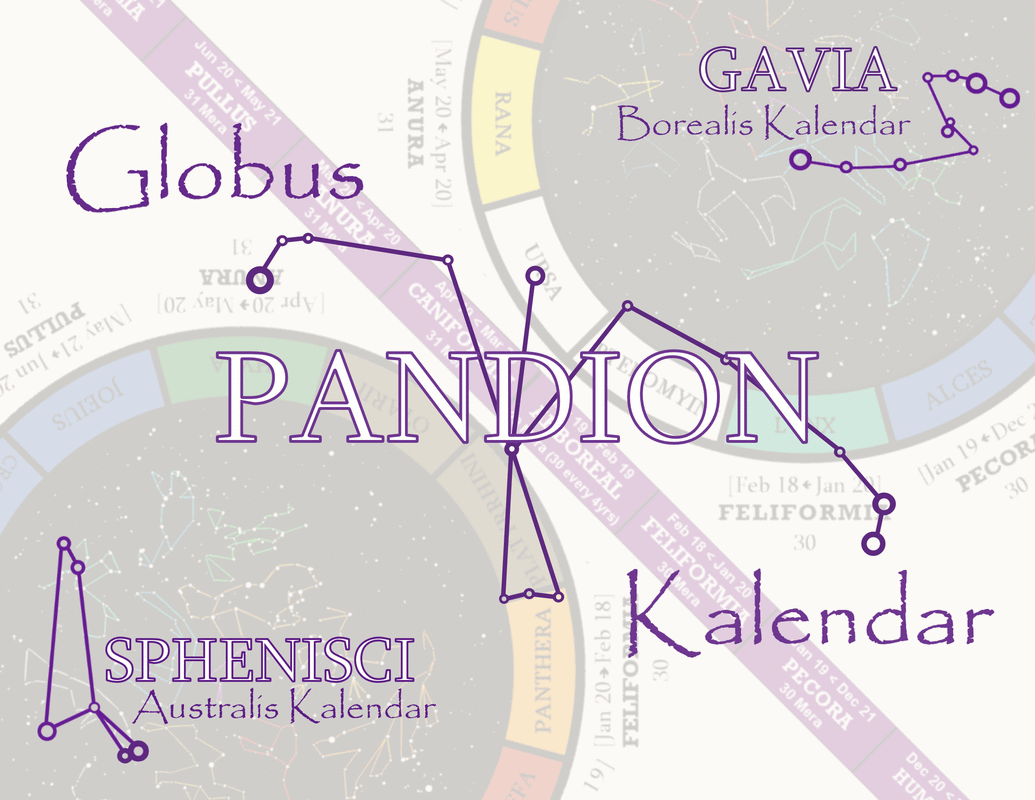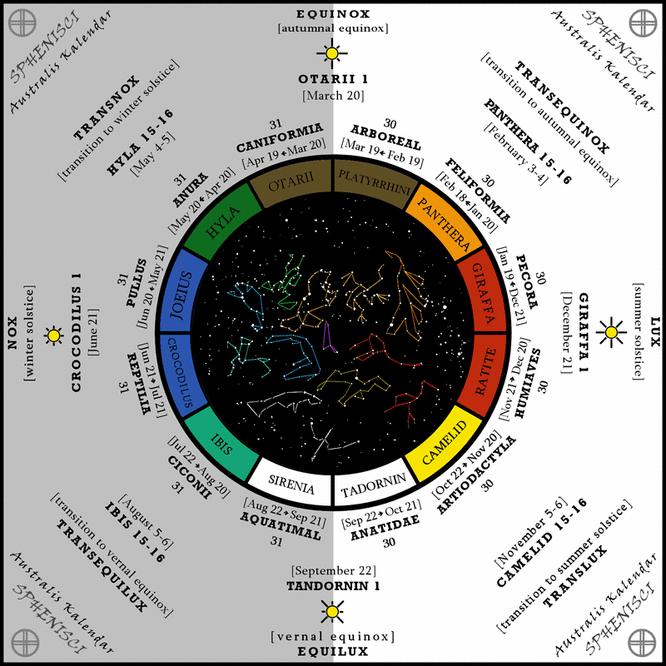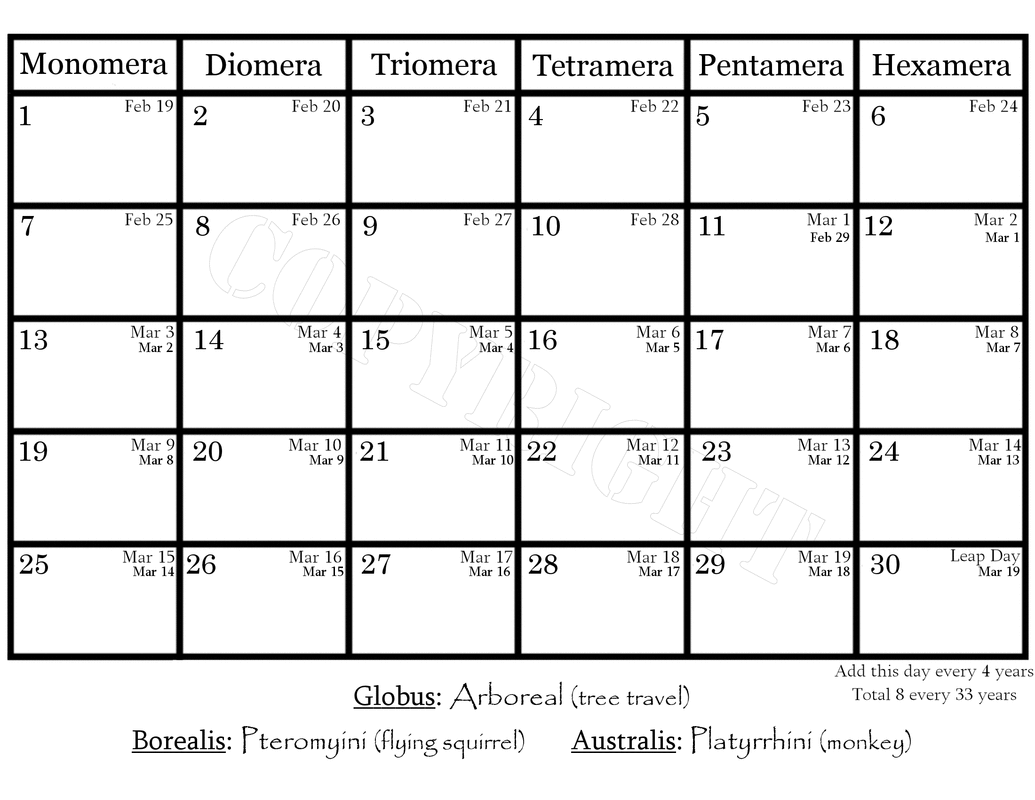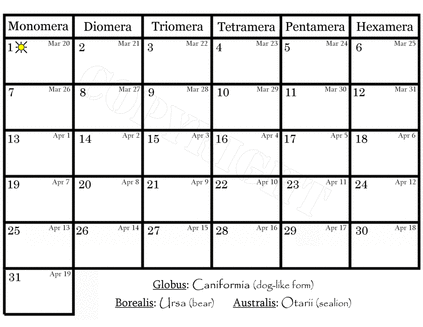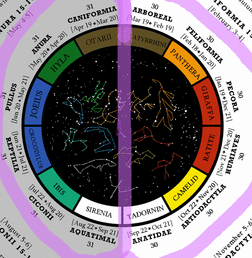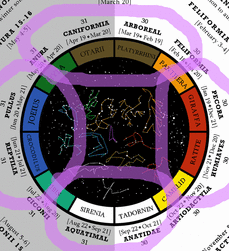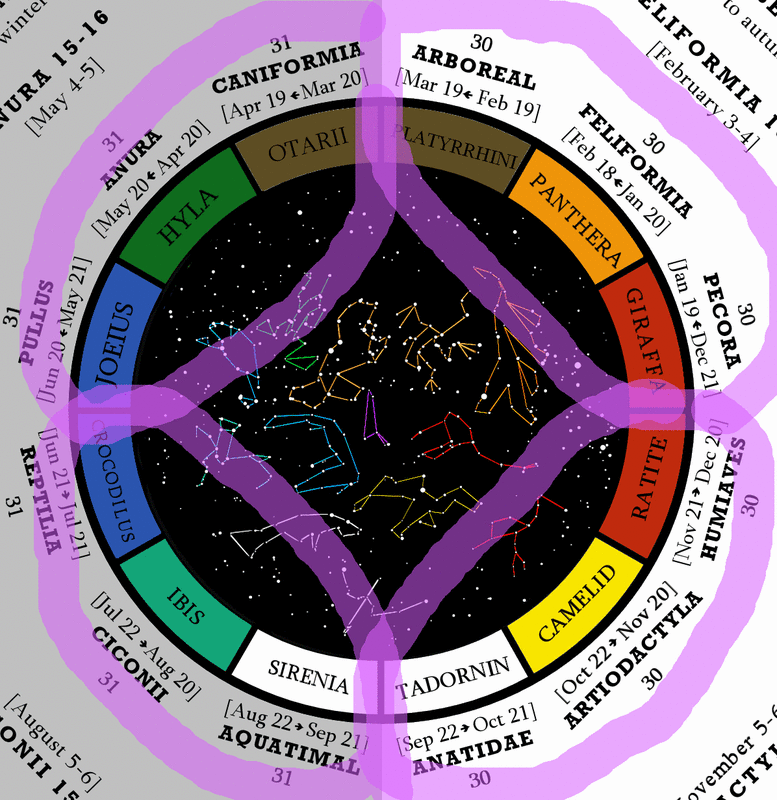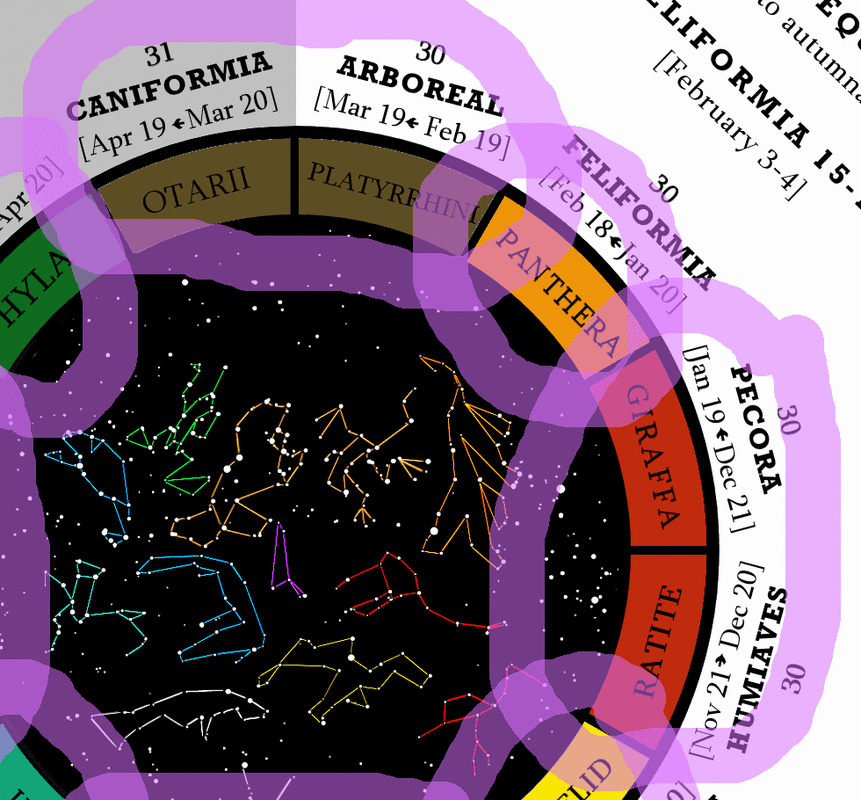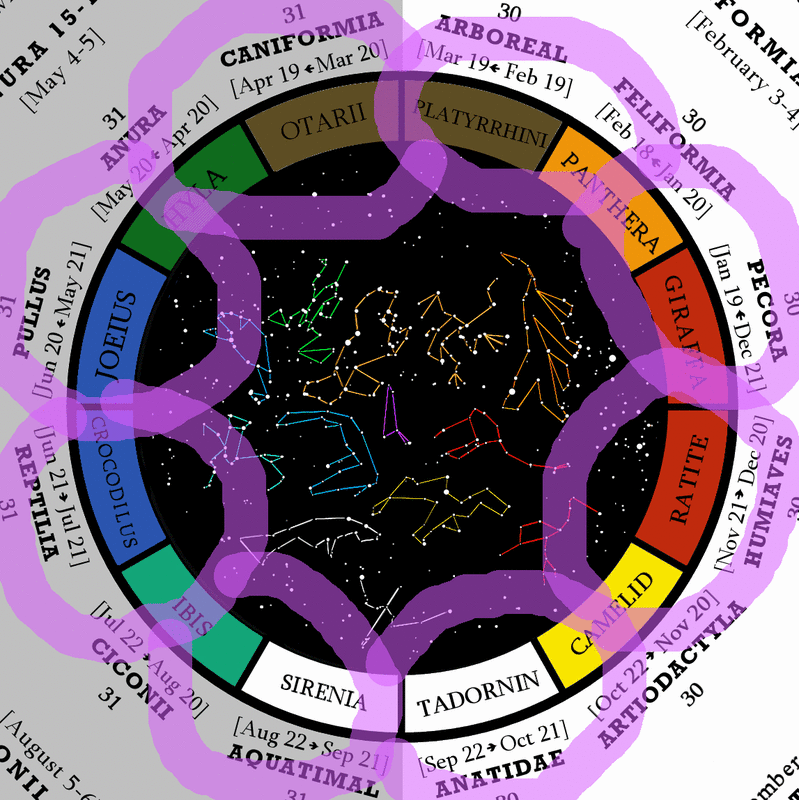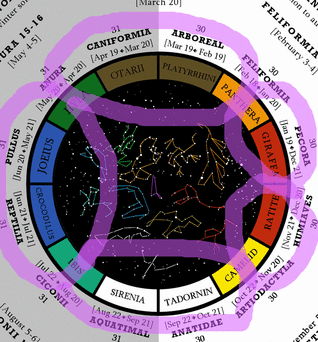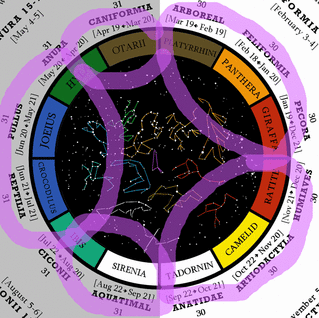© Rua Lupa
The image above is Sphenisci, the Australis Kalendar/Year Wheel. Sphenisci is the Order & Family of Penguins; The only group of birds that live almost exclusively in Australis (southern hemisphere). The constellation in the center of the australis sky is Sphenisci (Penguin); of which all the other constellations revolve around and of which the year revolves in the Australis Kalendar. It was named after the penguin not just because it can only be found in Australis, but because of the rare evolutionary path this species has taken; From the ocean whence all creatures came, onto the land, into the sky, and back to the water again. A full circle, like the revolution of the earth, moon and stars. Hence the kalendar being named after it.
The Australis Year Wheel is a solar calendar of 365 days a year with one day added every four years. That one day would be added to the end of Mensis Platyrrhini (Monkey). The year begins on Caniformia 1. Over a period of 33 years, only 8 leap years occur to maintain long term accuracy.
The names of each mensis (kalendar month) derives from the constellation that is in the center of the australis night sky that time of year, which is named after an animal that is active during that same time of year.
Here are the names of each mensis and its translation from the beginning of the year to the end. The format is of Pandion (globus name): Sphenisci (Australis name)
Anatidae (Ducks, Geese & Swans): Tandornin (Sheldducks);
Artiodactyla (Even-toed ungulate): Camelid (Camelus, Vicunga, Lama);
Humiaves (Ground Birds): Ratite (large, flightless birds of Gondwanan origin);
Pecora (Hoofed Mammal): Giraffa (Giraffes);
Feliformia (Cat-like): Panthera (Tigers, Lions, Jaguars, & Leopards);
Arboreal (Tree travel): Platyrrhini (Monkey);
Caniformia (Dog-like): Otarii (Sealion);
Anura (Frog): Hyla (Tree Frog);
Pullus (Young animal): Joeius (Joey);
Reptilia (Reptile): Crocodilus (Crocodile);
Ciconii (Large Longlegged Wading Birds): Ibis (Ibis);
Aquatimal (Aquatic animal): Sirenia (Sea Cows).
MENSIS & HEBDO, The Kalendar Month & Week in Detail
There are 6 days in a week (called hebdo to emphasis this difference), and every mensis (month) begins on the same day of the week, Monomera (day one). In the top right corners is the equivalent day in the Gregorian calendar.
There are 6 days in a week (called hebdo to emphasis this difference), and every mensis (month) begins on the same day of the week, Monomera (day one). In the top right corners is the equivalent day in the Gregorian calendar.
|
A typical mensis of the Australis 'day half' of the year (between the equinoxes) has 30 days in a month, with the exception of the last mensis in the year, being the one depicted, having 29 days in a common month and 30 every four years with a total of 8 leap years every 33 years.
|
This is a typical mensis of the Australis 'night half' of the year (between the equinoxes) with 31 days in a month. Even with the additional last day on Monomera, it is considered an extra day as a day off, with the following month starting on Monomera as if the last day didn't take that space. This removes the conventional shift in days of the week typical in the Gregorian calendar, making this kalendar perpetual as it never needs to be replaced because the days of the week never shift.
|
Ways of Interpreting Seasons: Tempus Types
Luxnox Tempus
The four images of the sun represent the four major solar changes of the year in the form of the four changes of a day:
|
|
They are named as such because half the the year is dark (represented by a grey background and is called the 'Nox Mensis' - the months of dark) and the other half of the year is light (represented by a white background and is called the 'Lux Mensis' - the months of light), like that of night and day, creating a two season divide of light and dark. |
|
Transmera Tempus
The span between each Transmera (transition day) from the day of Transequilux (transition to vernal equinox) to the day of Translux (Transition to summer solstice) for example, can be considered the Vernus Tempus (spring season). Groupings like this are called Transmera Tempus (Transition day Seasons). Having four seasons a year. It can also be considered as the four times of day: Dawn, Day, Dusk, and Night. |
|
|
|
Trimensis Tempus
An alternative way of looking at four seasons, especially for far temperate regions that are closer to the poles, is by separating the mensis by the solar changes so that they are in groups of three, i.e. Tadornin, Camelid & Ratite. This is called a Trimensis (three months) and each trimensis can be considered a season in it of itself, i.e. Tadornin (Late Spring), Camelid (Transition between Spring & Summer), & Ratite (Early Summer) is the Vernal Trimensis and Giraffa (Late Summer), Panthera (Transition between Summer & Fall), & Platyrrhini (Early Fall) is the Aestus Trimensis (three months of summer). |
|
Solaris Tempus
You will also see that each solar change has the same colour on either side of it. The two adjacent mensis of the same colour can represent a season, a single mensis with none of the same colours beside it would be considered transitions between each season - potentially being a season in itself. For example, the two red mensis of Ratite & Giraffa would represent summer; the orange mensis of Panthera would then be the transition to autumn, and the brown mensis of Platyrrini & Otarii would then be autumn. |
|
Combining Different Tempus Types
Depending on your regional climate having the entire year using one tempus type may not make sense. This is when you can combine different tempus types. Here are a couple examples:
Depending on your regional climate having the entire year using one tempus type may not make sense. This is when you can combine different tempus types. Here are a couple examples:
Copyright Rua Lupa 2012

